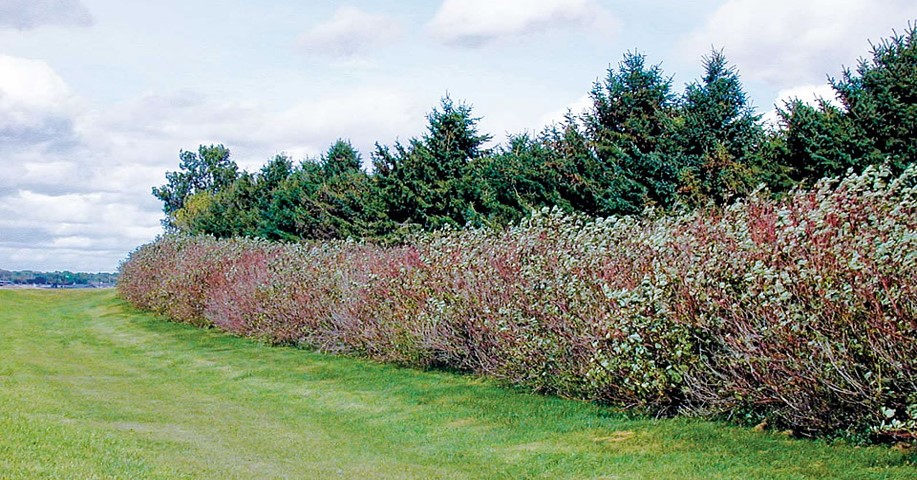Windbreaks for You and Wildlife
Using rows of trees and shrubs as a privacy hedge or to reduce impact of winds blowing across the land is nothing new. Preserving topsoil from being blown away, protecting livestock and limiting drift of pesticides/herbicides on agricultural land are a few common reasons to have a windbreak, but the purpose and utilization of this planting approach can also be melded with agroforestry.
Blending in fruit and nut-producing species that offer products to market and provide wildlife habitat, or growing trees and shrubs that produce timber, colorful stems for woody florals, or potential biofuels are all innovative ways to make a windbreak even more ecologically functional and economically beneficial. Beekeepers can use breaks to provide nectar and shield bees from wind.

Windbreak, photo courtesy of USDA National Agroforesty Center